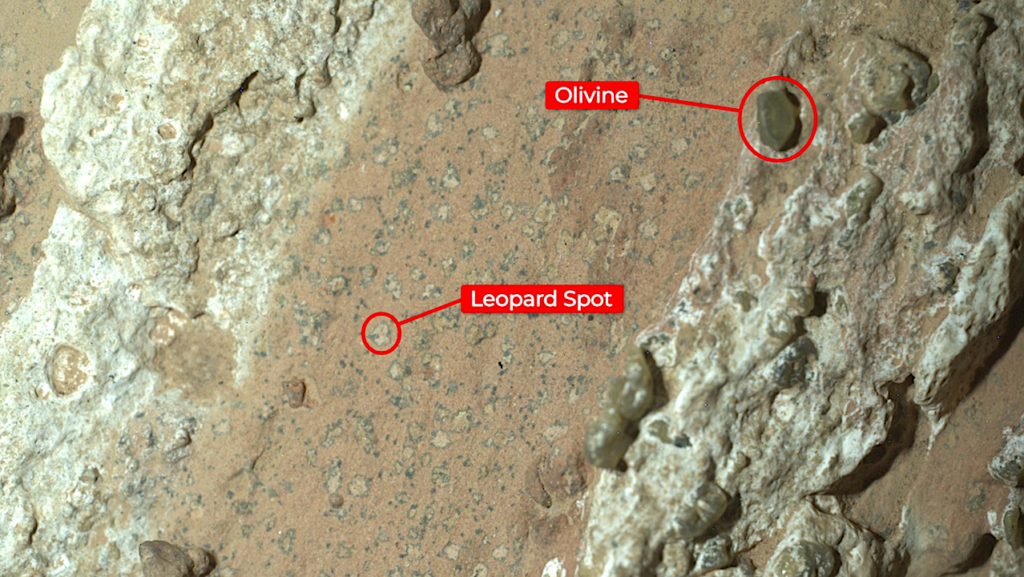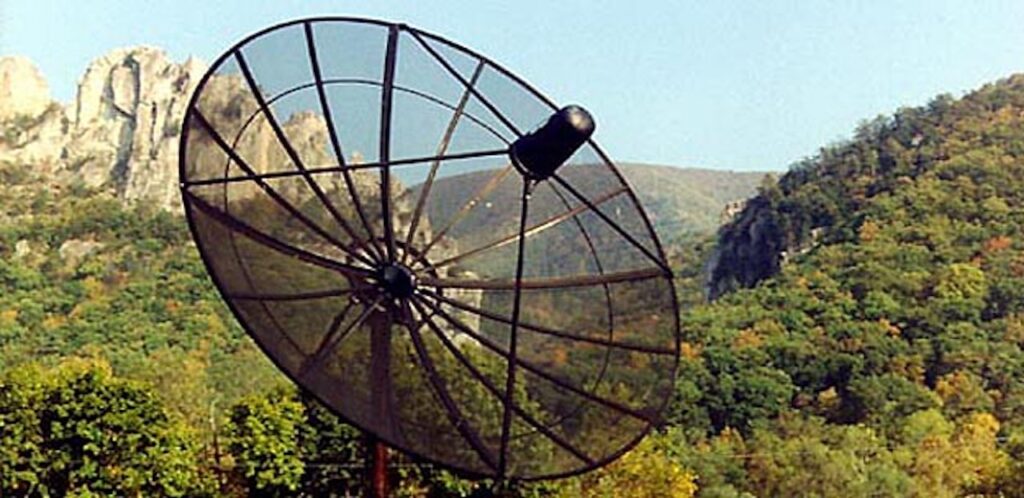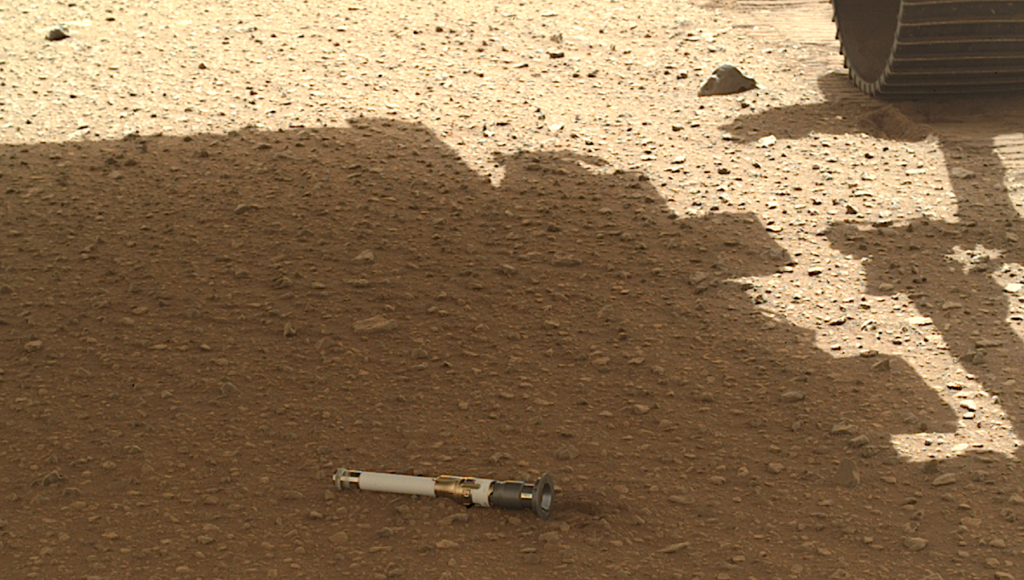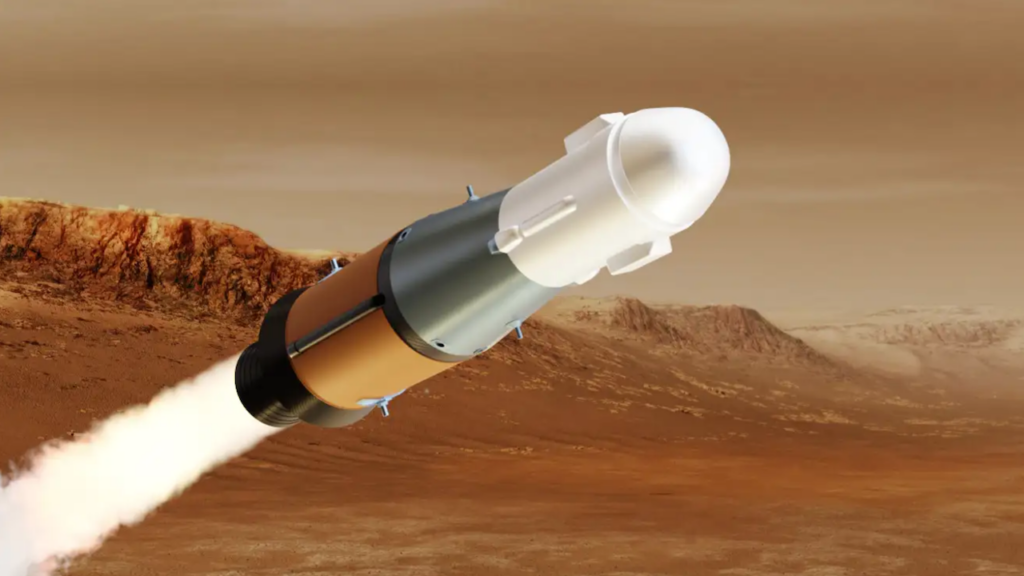Keith’s note: I will make this simple: did NASA find clear evidence of life on Mars? No. Did NASA find an interesting rock feature that might signal or indicate that there was once life on Mars? Yes. Is this a final answer? No. Not by any means. Much, much more work needs to be done. That is one of the main reasons why advanced in situ instrumentation on landers and eventual sample return missions are needed. Just remember: on Earth there are many things that look like life that are not – and there are many things that are alive that look like rocks. And that’s on Earth. What happens on Mars may be totally different. Or not. Let’s go find out more. Full story: Mars Perseverance Rover Imagery Of A Rock With Possible Biosignatures
(more…)Keith’s note: On this day in 1997 the film “Contact” hit theaters etc. I wrote something in 1997 about a visit I made to West Virginia, Green Bank, hanging out with Jill Tarter, and driving around radio telescopes in a diesel taxi cab. I am posting this from a climber’s hostel in New Hampshire which seems appropriate. “Going Off Source: Time Away With SETI In West Virginia“.
(more…)Keith’s note: The NASA Astrobiology Graduate Conference (AbGradCon) is underway from 11-13 June at Cornell University. Yet there is no mention of this event at the official NASA Astrobiology website or its event page; at its 827,000+ follower Twitter feed @NASAAstroBio; at the NASA Science Mission Directorate webpage; The NASA STEM Education webpage; NASA+ scheduled events webpage; or even the Cornell University webpage. No email about links was sent out to the NASA Astrobiology mailing list or media. Here is the official AbGradCon webpage. Here are the live webcast links via the NASA Astrobiology YouTube page (that they tell no one about) starting at 9:00am EDT/1:00pm GMT each day: 11 Jun, 12 Jun, 13 Jun. Only NASA could take a subject as potentially profound as Astrobiology – the search for life elsewhere in the universe – and ignore even the most basic rudiments of outreach and public awareness. FWIW David Grinspoon and Lindsay Hayes I am not exactly sure who is in charge of outreach strategy for NASA’s Astrobiology program but they have failed miserably in this instance. Instead of offering access to students nationally – and globally – in what would be a wonderful exercise of soft power – NASA just sits on its hands. Someone needs to fix this.
Keith’s note: With regard to Mars Sample Return, Bill Nelson said today that “$11 billion for Mars Sample Return and waiting until the 2040s to get a sample back are both “unacceptable” … “What to do? I have asked staff to reach out via RFI to JPL, industry, to all NASA centers to report back this Fall an alternate plan that get samples back quicker and cheaper and stay within budget limits that Decadal Survey said we should.” More: NASA Sets Path to Return Mars Samples, Seeks Innovative Designs
(more…)Keith’s note: Although NASA did not sponsor research wherein tardigrade proteins were tested in human cells to see if they work and possibly influence human metabolism – someone did -and it worked. This emerged as the result of prior work into extremophiles. Tardigrades are a favorite extremeohpile amongst astrobiologists. They have even been studied on the International Space Station. Drug companies scour the world – sifting through soils, undersea creatures, and toxic waste dumps for interesting organisms that can provide new industrial processes or biomedical applications. One would hope that the people at NASA who do the whole Spinoffs thing every year would pay attention to things like this. Perhaps a little funding might be worth considering. NASA loves to talk about all the things ISS biomedical research can do for people back on Earth. Who knows maybe the notion of hibernating astronauts on long space missions could benefit. Last week NASA was crowing about the Biden Cancer Moonshot thing. Well, NASA Astrobiology research might also have similar spinoff benefits. But NASA won’t know unless it starts to poke around. Full release.
(more…)Keith’s note: In the ‘Star Trek Strange New Worlds’ Second Season episode “Under The Cloak of War” there are battle scenes that feature military base with a lot of tents. Those tents were bought by the production company from the manufacturer Heimplanet. By coincidence, astrobiologist, SCUBA explorer, and adventurer Dale Andersen had several of these tents at his base camp at Lake Untersee, Antarctica in 2023. One thing led to another and now Heimplanet has a blog post on Dale’s expedition and their tent referencing my Astrobiology.com website and Star Trek Strange New Worlds. Life imitating art imitating life etc. C’mon NASA SMD, you need to push the envelope a lot further as you tell the world about your various Astrobiology projects. Your outreach is paltry and boring. Full story: That Time Star Trek Tents Were Actually Used In Antarctica.
Keith’s 26 March 2024 note: 3 months ago I posted a note about the badly maintained Astrobiology program pages at NASA.gov. Among other things it was not clear who was in charge of NASA’s Astrobiology program, NASA SMD’s public-facing webpages seemed to be uninterested in even mentioning the word “astrobiology” much less sending you to places where you could learn about it, and NASA’s own search engine was not at all helpful and downright misleading. Since then couple of personnel-related things have been fixed but otherwise, if you want to understand what NASA is doing in Astrobiology, you should use Google instead. “Searching for life” in the universe is often cited by NASA – and is one of the most provocative things NASA does – with profound implications. Yet the agency seems to go out of its way to make sure all the existing research and potential stays out of date and hidden inside of badly designed and maintained websites. Go figure. Below is my earlier post with comments about the few things that have been fixed.
(more…)Keith’s note: I have been living with the image in my mind of the Pioneer plaques and Voyager Golden Records heading across the outer solar system and into interstellar space for half a century. To me, that was the most Carl Sagan – of Carl Sagan – ideas. All these years later – despite its Disco era origins – it transcends time well – which is exactly what you want a message to the inhabitants of another solar system to embody. Well, NASA just did something as cool – and in some ways even cooler. More at An Astrobiology Droid Asks And Answers ‘How Many Ways Can You Say Water’?
(more…)Keith’s note: Mars Sample Return, however well-intentioned and lauded by advisory committees, has been tossed around and modified and rescheduled so many times that it is no longer clear what it should do – or if it is even needed. It has always been somewhat gospel that NASA would not send human crews to Mars until a sample return mission had allowed the question of current life to be addressed. The current scenario has a Mars sample return to Earth in 2033 and (one would guess) basic findings a year later. A decade ago NASA talked about sending humans to Mars in the mid 2030s. Now it is the 2040s. Given the increasingly slow pace and out of control costs with which NASA develops human spaceflight capabilities, in order to meet a mid 2040s goal, basic mission design and hardware development needs to happen shortly after the sample comes back to Earth. Add in recent JPL layoffs, private plans by SpaceX et al to simply go there regardless of a sample return mission, and China’s plans to do sample return sooner than the U.S., and the entire NASA Mars Sample Return paradigm has become hopelessly clouded and conflicted. Given incredible advances in nanotechnology and genomics perhaps it is time to consider in situ life detection missions that actually look for life instead of sniffing around the edges. Here is what NASA OIG said the other day:
- The trajectory of the MSR Program’s life-cycle cost estimate, which has grown from $2.5 to $3 billion in July 2020, to $6.2 billion at KDP-B in September 2022, to an unofficial estimate of $7.4 billion as of June 2023 raises questions about the affordability of the Program. Characteristics intrinsic to big and complex missions like the MSR Program are hard to quantify in estimates but can drive project costs upwards throughout development. These include fully understanding the mission’s complexity, initial over-optimism, a less than optimal design/architecture, and the team’s ability to perform to expectations. When developing its cost and schedule estimate for KDP-C, and as the MSR Program addresses its architecture issues, Program management must consider these intrinsic characteristics and not attribute past cost growth to just the COVID-19 pandemic, inflation, or supply chain issues.
- Additionally, MSR Program formulation is impacted by coordination challenges between NASA and ESA. While communication processes are formally documented and being followed, NASA and ESA are experiencing issues related to schedule transparency, asynchronous design progress, and mass allocation, which appear to stem from differing operational approaches, acquisition strategies, and agency funding mechanisms. The CCRS project team noted that significant progress has been made addressing interface issues between the two entities.
- The MSR Program recently acknowledged it likely cannot meet the life-cycle cost estimate and launch dates established at KDP-B. A September 2023 report by an Independent Review Board recommended the Program consider modifications to specific mission designs. Accordingly, it is critical that before the MSR Program is approved to proceed from formulation into development, viable alternatives to the Program’s mission architecture are considered—including mission launch and sample return alternatives—as well as the value of the samples returned, the Program’s schedule, life-cycle cost estimate, and the Agency’s historic leadership position in space exploration.
Keith’s note: I guess its nice that NASA’s Astrobiology program officially emails info about job openings – in Norway. It might be a little more appropriate to start sending out info on job openings – in the U.S. – for all the people being laid off at NASA JPL and NASA Goddard. Meanwhile at the official NASA Astrobiology website the top story is about a undergraduate fellowship with a due date of 2 February 2024 – almost 2 weeks ago. Why bother being accurate. Just sayin’
(more…)









